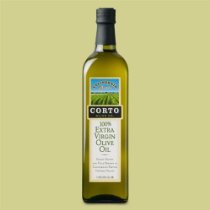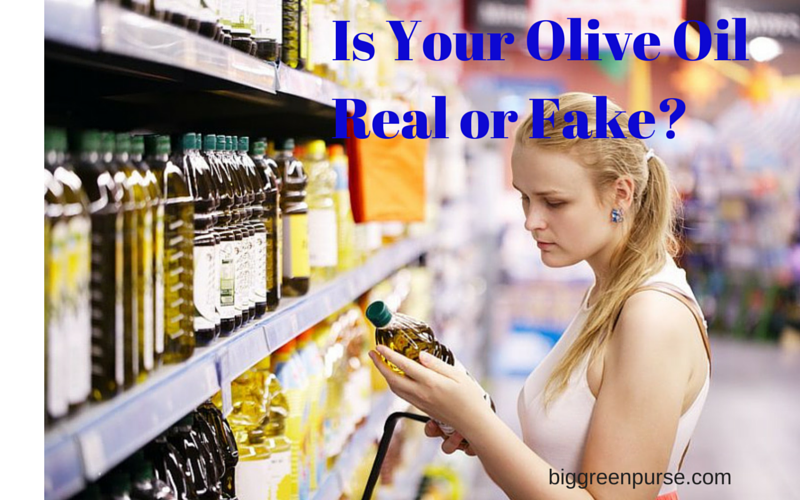Is olive oil the go-to oil in your house for cooking, roasting, marinating, and salad dressings? Mine, too – which is why I was shocked to read a report, originally produced in 2010 by the University of California – Davis and the Australian Oils Research Laboratory, that found that a lot of imported olive oil labeled as “extra virgin” was actually a mix of a lot of different ingredients – some of them not even olive oil. How does this “olive oil fraud” occur, and what can you do to tell real olive oil from fake?
What Is Real Olive Oil?
The best olive oil is called EVOO, for extra virgin olive oil. It is the top grade of olive oil according to both the International Olive Council (IOC) and the US Department of Agriculture. It is made simply by crushing olives and extracting their juice. It is the only cooking oil made without processing chemicals, additives, and industrial refining. “Fake” EVOO may have been mixed with other oils, like soy or canola. It may be made from older olives or olives harvested but then not processed in a timely fashion. And the oil may have been extracted using heat, which blunts the delicate, fruity taste the best olive oils have. Real olive oil is just that: olive juice only.
According to the report:
* 69% of imported olive oil samples labeled as extra virgin olive oil (EVOO) failed to meet quality standards set by the U.S. Department of Agriculture and the International Olive Council. Many of these samples were rancid, “fusty” and musty, and actually were of lower grade oil than EVOO. By comparison, only 10% of olive oils produced in California did not meet the standards.
I’m not very keen on being hoodwinked by companies trying to cash in on my desire for EVOO by selling me something else. Here’s what I do to buy real olive oil:
How to Buy Real Olive Oil

2) Buy it in tinted glass. I never buy any oil in a plastic bottle, since the chemicals in the plastic (like BPA) could leach into the oil. When it comes to olive oil, the best is usually sold in a tinted glass bottle, which reduces exposure to sunlight and minimizes the chances that the oil will oxidize in the bottle (even clear glass is better than plastic), or stainless steel tin. Oxidation makes the oil rancid, so it is important to keep it fresh as long as possible.
3) Check the date. Don’t buy oil that’s older than 12-18 months. The fresher the oil, the better. How do you know? Look for the harvest date on the label. Plus, only buy as much as you will use in a few months. This is one product that doesn’t make sense to buy in bulk, as it will eventually get rancid if it is not used up relatively promptly.
4) Buy American. Though 69% of imported olive oils did not meet the standards for extra virgin olive oil, only 10% of the oils produced in California failed the standard. Buy local!
5) Taste and smell it. Real olive oil should taste a little fruity when you first try it, then get a bit peppery as you swallow it. If it comes across as rancid or “off” in some way, put the cap back on and return it to the store.
6) Look for low acidity levels. Free fatty acidity is considered a direct measure of the quality of the oil, reports the Olive Oil Times. The lower the number, the better. Factors which lead to a high FFA in olive oil include fruit fly infestation, delays between harvesting and extraction, fungal diseases in the fruit and careless extraction methods.
7) Choose “cold pressed.” Cold pressed means that no heat was applied when the olives were being crushed and their juice extracted. Heat can alter the olive’s chemistry and thus, its taste. Cold pressed is best.
According to the UCDavis study, the brands that best met EVOO standards include the following:

* California Olive Ranch
* Kirkland Organic
* Lucero (Ascolano)
* McEvoy Ranch Organic
* Pompeian
Plus, these brands are also extra virgin and bottled in glass or tin:
You can shop for these and others in our Amazon store. (NOTE: A lot of olive oil sold on Amazon is packaged in plastic. Be sure to check the packaging before you buy.)
Want more information?
You can read the study for yourself and compare all brands tested here. Consumer Reports offers its recommendations here. LetThereBeBite has an excellent shopping guide here.

















